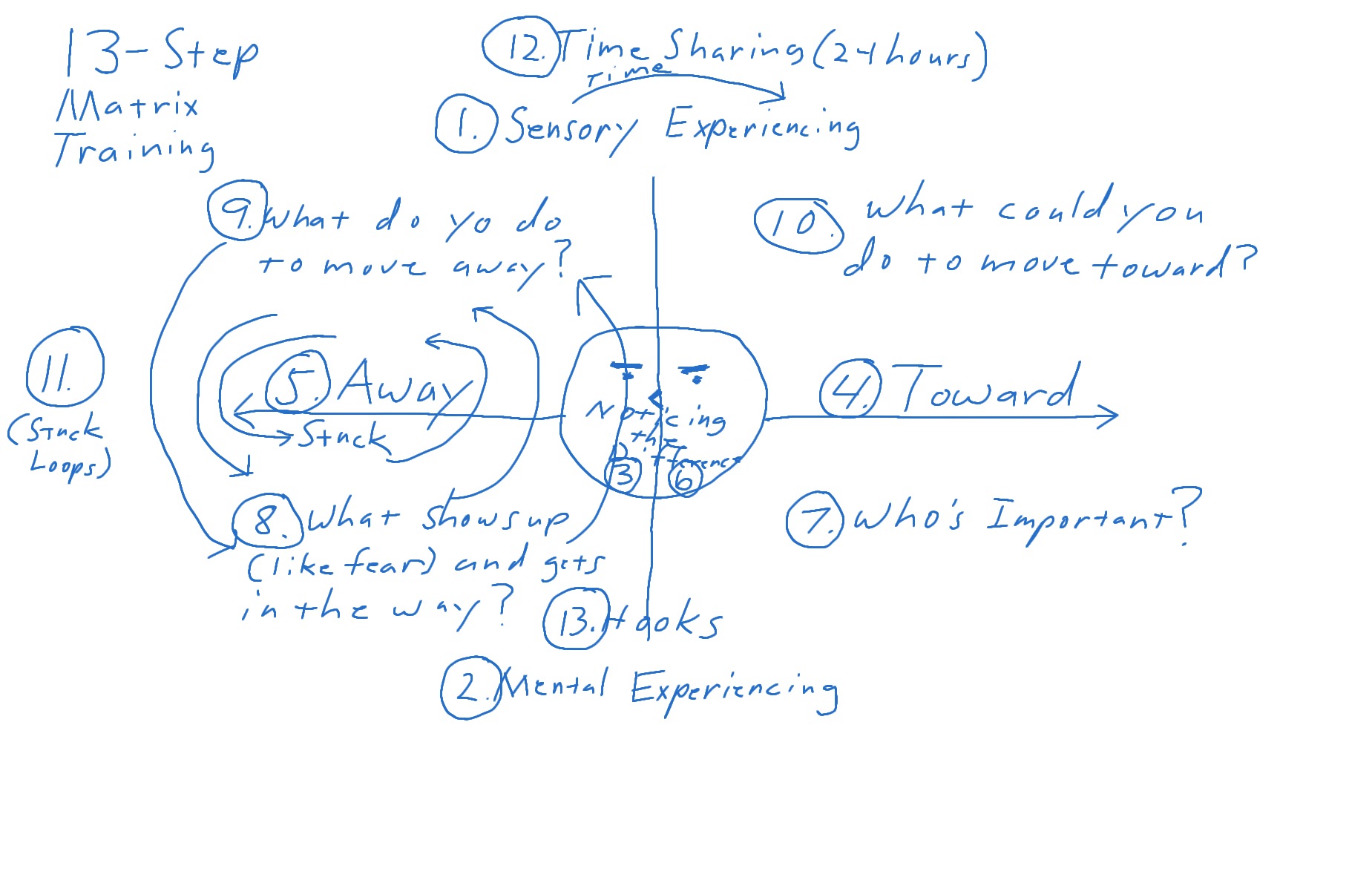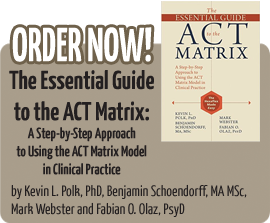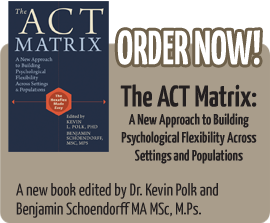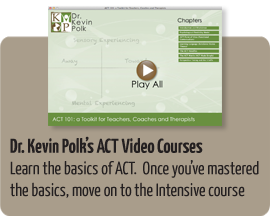Several people have asked me, “How do I teach others about the matrix?” Below is the response I give now. I’ve included a “13-Point Matrix diagram.”
If you want to hear me run through these 13 points, join me for a webinar Wednesday, June 11, 2014. Click Here for more information.
Basic Matrix Training: 13 Points
I’m assuming you already have The ACT Matrix book. That’s a wealth of information. Have you watched the ACT 101 video series from my website? Go to www.drkevinpolk.com and look to the lower right and you will see “Dr. Polk’s Video Courses.” The ACT 101 series is free.
The way I teach the matrix these days is through 13 Steps
Preamble: “Hello, I’m ________ and I work from the Psychological Flexibility Point of View. Is it okay if I show you that point of view? Great!
1. Sensory Experiencing,
2. Mental Experiencing,
3. Noticing the Difference,
4. How it feels to recall moving Toward,
5. How is feels to recall moving Away from stuff like fear,
6. Noticing the Difference (yes, that’s the second trip to noticing the difference),
7. Who is Important to You? (lower right quadrant)?
8. What shows up and gets in the way (like fear) of moving toward who’s important?
9. What behaviors do you (or others) do to move away, e.g., running in response to fear?
10. What behaviors do you (or others) do to move toward who (and also what’s) important?
I tell folks noticing all of that stuff is the Psychological Flexibility Point of View. I then ask if it’s okay if a continue a bit more…
11. On the left side I show the “Away Loops” (the unworkable change agenda of ACT). For example, you move away from fear (lower left) by hiding in your room (upper left). I draw a counterclockwise semi-circle from Fear to Hide. Then I say, “but the fear comes back.” Then I complete the counterclockwise circle back to fear. I then do some other Loop examples, spiralling the circle smaller. Then I write “Stuck” and ask, have any of you ever felt stuck in a cycle like this? (Everyone has)
12. Time Sharing: How many hours in a day? (24). Great! Everyone spends 24 hours doing a combination of Away and Toward moves. If you feel you are spending too much time on either side, then the idea is to shift time. So if one were spending too much time doing Away moves, then you would want to Accept some of the stuff in the lower left and have it while you do a Toward move. A couple of minutes shifted per day adds up fast.
13. Noticing Hooks: Have you ever been cut off in traffic, or maybe someone was very rude to you? Or maybe you saw a very attractive person? Yes, most people have had that happen. Sometimes the incident is so intense that it sticks with you for several minutes, or even hours. We call these things that grab our attention and stick with us “hooks.” What are your favorite hooks? (get responses from your audience). After a few responses, then say, “Here is some homework you might or might not do. Either way you will learn something, so it’s your choice… You might notice being hooked and then notice what you do next. No other analyzing is needed. Just notice the hook and what behavior you do next. If I see you again, I will ask you if you noticed any hooks.
1 through 13 are the basic Starter Routine. In a training I can do all of that in less than an hour, but I can increase the time if needed. Then we take a break and they have the Noticing Hooks homework that might be done over break.
After break we then do “Sorting” of the hook stories that people come back with. If they don’t have hook stories, then we sort other stuck stories into the matrix.
I hope this helps.
Let me know if you need more!
Be well,
Kevin





I love the matrix. Just wanted to thank you for the work you are doing.
Richard,
Thanks so much. I will keep working and see where it leads.
Be well,
Kevin
Hello Kevin, I was at your recent training in Portland Oregon. I have been using the matrix with a lot of success with clients, thank you. I was looking over my notes and I can’t remember what you said about Trauma Memory Sorting Game. You gave us a handout but didn’t explain how the Game works. Where can I find more information about the concept: “Jump starting derived relational responses?” Margaret Heriot, Chehalis, Washington.
Hi i am Soraya, I have to do the project. I need the principle of theory, history and principles of the matrix treatment, is it possible to help me and reference the content with you? Grateful
I think what you are looking for is in the book, The Essential Guide to the ACT Matrix. ACT stems from a view of behaviorism called Functional Contextualism, the theory of language and cognition called Relational Frame Theory. The matrix is a simplification of ACT down to two lines after I found it useful for in vivo exposure work in clinical practice. People quickly discovered that the ACT Matrix was helpful in almost all human endeavors.